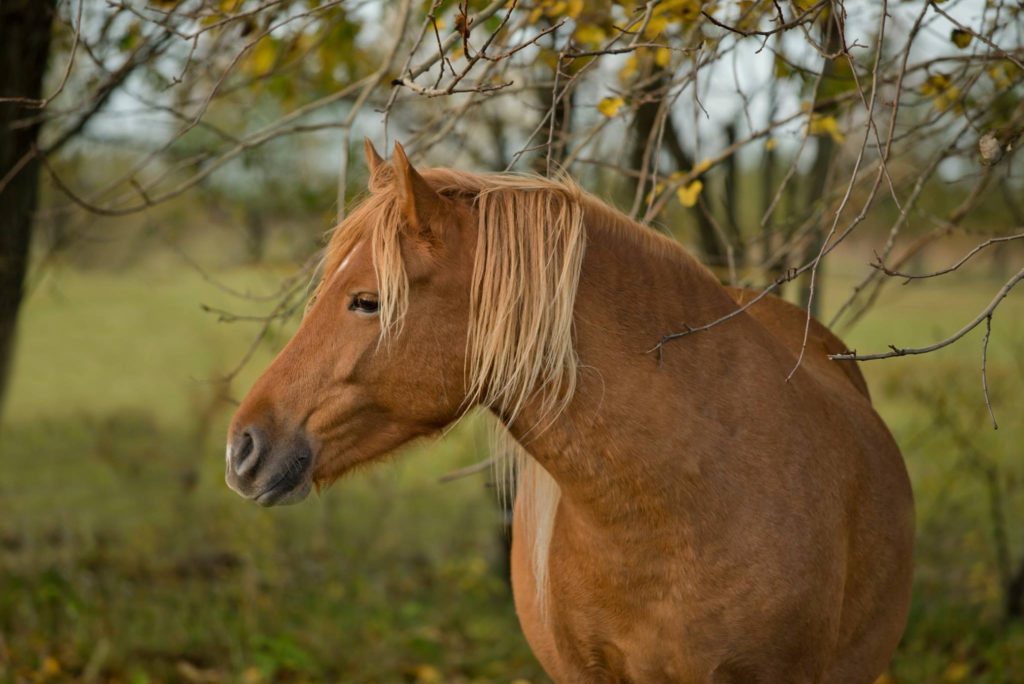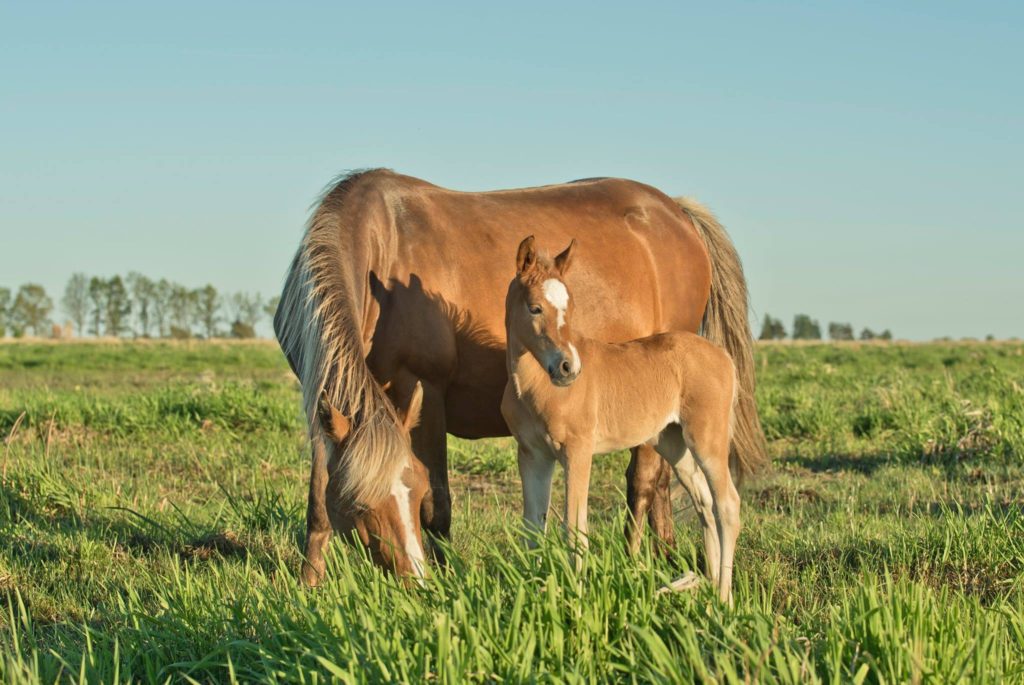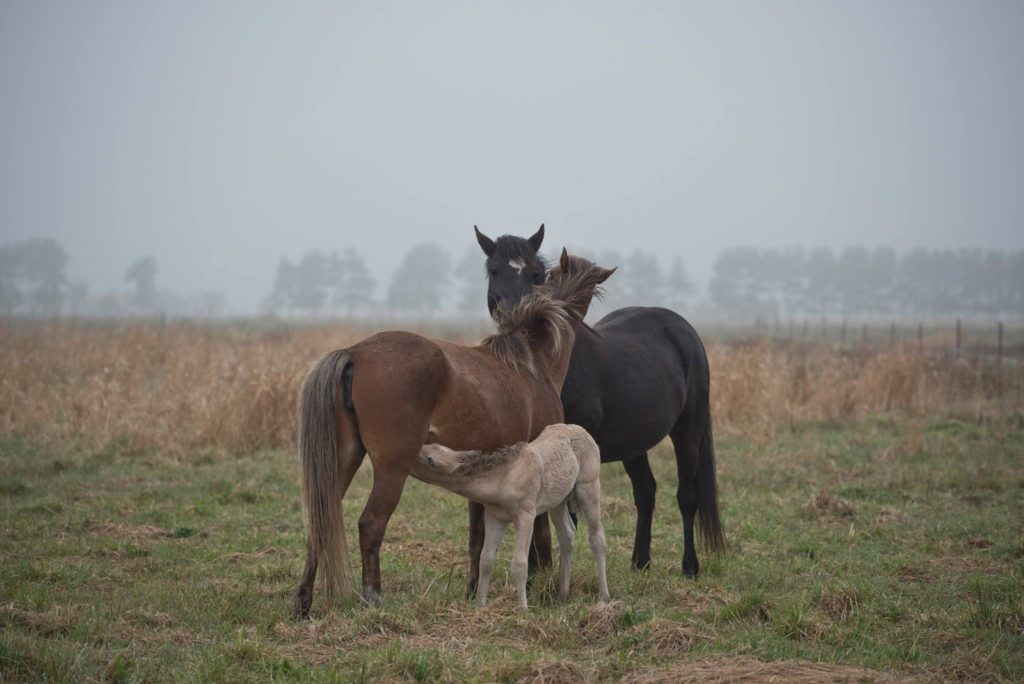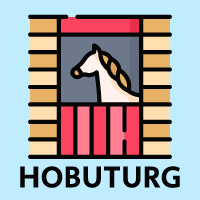The Estonian Native (aka. the Estonian Klepper or simply the Estonian Horse) is an ancient breed of horse whose true ancestry is hidden in the fog of prehistoric times. It’s probable that the Estonian Native horse has lived on Estonian lands at least as long as people have. It descends from the Forest Horse, which lived in Northern Europe thousands of years ago, and its major characteristics have stayed pretty much the same. The Estonian Native can hold its own and function well in the Estonian climate – even without any assistance from man. This is a special and very useful attribute, which most horse breeds (and most domesticated animals, in general) don’t have. The Estonian Native is a low-maintenance animal. It is Estonia’s aboriginal breed that has adapted to Estonian conditions – both in terms of climate and soil – so well that attempts to better it with foreign blood have mostly failed. Cross-breeds of similar size have never been able to match the Estonian Native in terms of pulling power and endurance.

The Estonian Native Horse in Ancient Times
We know that horses were bred in Estonia already in the Bronze Age (1800-500 BC) when livestock became the major source of sustenance for people. Historians generally believe that horses of that time were smaller than the Estonian Native is today. Their main purpose then was to be a source of meat, but they were also already used as pulling and riding animals to a lesser extent. When the Bronze Age ended and the Iron Age began, the purpose of the horse changed significantly, and they became to be used mostly in ways that we consider normal in the present day.
The earliest written record of the Estonian Native comes from the 11th century, which is pretty much the beginning of historical times for Estonia in general. Horses were part of the Estonian story from the beginning, which is a good indication of the importance of horses for people in Estonia, and also of their quality. Adam of Bremen – the cleric and traveller from whom the first account of the Estonian Native comes – wrote that Estonians were wealthy people with good horses. There are legends of (Saaremaa) Estonian raids against Swedish coastal towns where their quick horses were also used. The horses had been taken on boat from home to Sweden.

Constantin Blumberg, an Estonian born professor at Kazan Imperial University, wrote in his book “The Estonian Horse” in 1887 that, “We know at least that Estonians had a lot of good horses by the 12th century when the German invasions began.” Many Estonian Natives were used during the Livonian Crusade (1208-1227 in Estonia) when the country was Christianised by Germans and Danes, and not only by the Estonian side. Henry of Livonia, the priest and chronicler of these events, wrote that Estonians never went to battle without their horses. He also describes a German raid to the lands near Tartu where they used horses that they had previously stolen from the Estonians, instead of their usual heavy steeds.
The Estonian Native Horse as a Basis for Other Breeds
A lot of Estonian Native horses have been taken to foreign lands in the course of centuries to improve the horse breeds of these lands. We know that merchants from the great city of Novgorod did this in the 12th and 13th centuries. We also know that various Swedish kings improved the equine composition of their army, going through Estonian lands to fight with Russia. The Estonian Native was also highly valued by the Russian Czar Peter the Great (1672-1725) who imported a lot of them to Russia. Anna Ivanovna, the Empress of Russia from 1730 to 1740 even issued an imposition to the effect that tenants of imperial manors in Saaremaa were obliged to raise Estonian Native horses for the imperial government. These were used by the dozens and hundreds to improve Russian breeds. Because of this, we can say that the Estonian Native had a role in the formation of the Russian postal service as well, as many Russian postal horses had some Estonian in their ancestry.
The beginning of organised horse breeding in Estonia is considered to be the Livonian Diet of 1855 when the local nobility declared that they needed to found new horse breeding institutions to save the endangered Estonian Native breed and to improve its attributes. A year later, the Tori Stud was established. There were two main directions in the breeding of the Estonian Native, initially. Some were in favour of improving the breed by crossing foreign stallions with native mares. Others (local farmers, mostly) showed by trials that it was very difficult to improve the breed with foreign blood. What they found was that the Estonian Native was stronger, more durable, and less demanding than any cross-breed, and the only reasonable way to make the the Estonian Native bigger was to use pure breeding.

Planned pure breeding began in 1921 when the Estonian Native Horse Breeders’ Society (Et: Eesti Maahobuste Kasvatajate Selts) was formed. The Republic of Estonia had then just been founded and the young republic decided to formalise and support the Estonian Native and two other breeds that were based on it, i.e. the Tori Horse and the Estonian Draft. As time went by, the latter two breeds became more common in mainland Estonia, leaving the Estonian Native to Western Estonia, and especially the islands.
Characteristics of the Estonian Native Horse
What, then, are the attributes that make the Estonian Native such a special breed? Firstly, of course, it is easy to maintain. Secondly, there is the great pulling power. The Russian Empire began hosting competitions for farm horses in the middle of the 19th century, and the Estonian Native excelled in these on more than one occasion. The best results came from a bay Estonian Native stallion called Vapsikas that was a product of the Tori Stud. His wither height was 141 cm and he weighed 401 kg. In a competition in Riga in 1865, Vapsikas pulled a load of 358 pood on cobble stones, which is nearly 6 tonnes. Having done a similar pull in Moscow, a local peasant exclaimed, “„Eta ne loshad – eta chuda!” (“This is not a horse, but a miracle!”) Having competed so well within the Russian Empire, the stallion was sent to Paris to compete internationally on the government’s expense. There, Vapsikas pulled a load of 6160 kg, which was more than 15 times the horse’s body weight. Vapsikas earned first prize and a silver medal in this event.

The most spectacular attribute of the Estonian Native is its colour. There is a lot of variation. It has all the main colours, and also different shades and combinations of gray, yellow, buckskin, dun, silver, etc. All together, the Estonian Native has more than 100 different colour variations.
The Estonian Native Horse in Modern Times
When in 1855 the Livonian nobles declared the Estonian Native to be an endangered breed, we should possibly have taken it with a pinch of salt. At the end of Soviet rule, however, the breed was endangered really and most certainly. The Estonian Native survived Soviet rule only on the islands of Western Estonia and even there was its population pretty minimal by the 1990s. It was officially listed as an endangered breed in 2001. By now, however, it has bounced back well. Their number is rising and there are several thousand of them in Estonia alone.

The function of the Estonian Native has obviously changed a lot through the centuries. Its main importance for people used to be as a durable pulling horse, but in the present day, its used mostly as a riding horse – especially by kids, but also by adults. The Estonian Native is a good breed for pony sports, and the best of them compete at international level. Because of recent breeding, the Estonian Native is now lighter than it used to be, and its gaits are more open. It is equally good in the walk, the trot, the canter, and the gallop, and it’s a keen and capable jumper as well.
Written by Kristjan Korsten, the editor at Hobuturg.ee. Sources: The Estonian Horse Breeders’ Association, EHBA’s Estonian Natives Society, the Estonian Food and Veterinary Office, the Estonian Native’s Protection Society, the Estonian Native Horse’s Breeders’ Society, the weekly newspaper “Maaleht”, the magazine “Loodusajakiri”, Priidu Tikk, Wikipedia, etc. Last updated in January 2018
